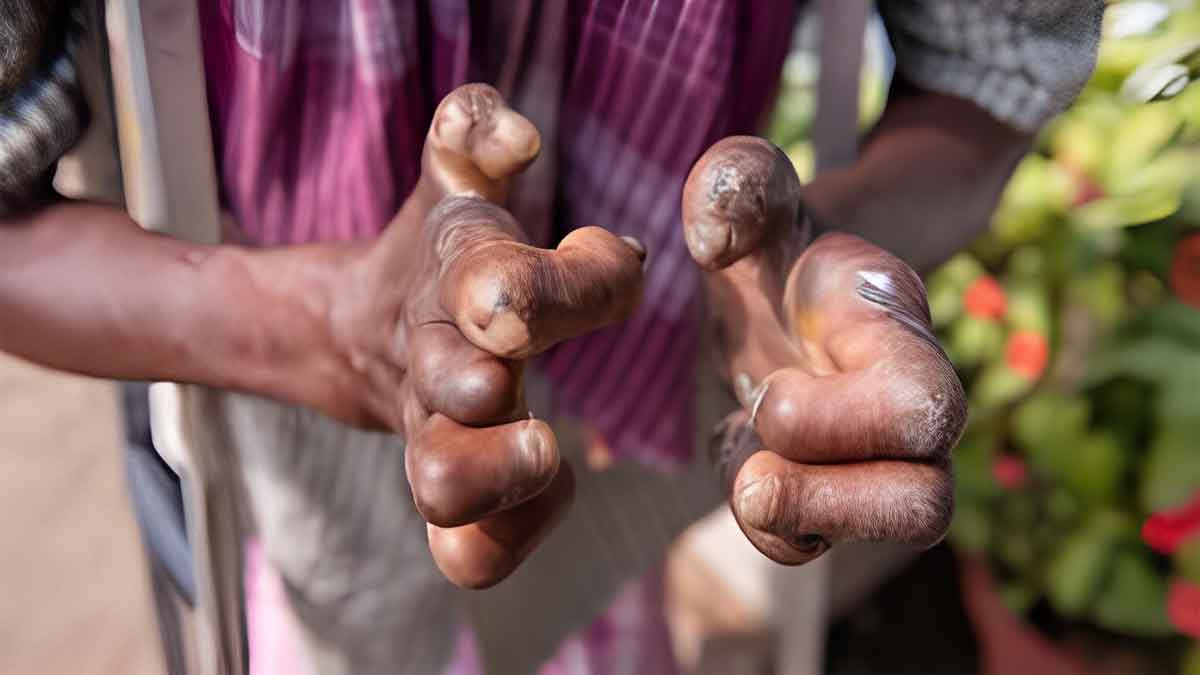
Leprosy is a chronic infectious disease, affecting the skin and peripheral nerves in your body. People with leprosy have discoloured patches of the skin, muscle weakness, or eye problems, which may lead to blindness. If left untreated, it can even result in paralysis or numbness in the skin's affected areas. We spoke to our expert, Dr J Hari Kishan, General Physician, Kamineni Hospitals, LB Nagar, Hyderabad, who explained this disease and listed its signs, causes, and treatment.
Table of Content:-
Leprosy, also known as Hansen's disease, is a chronic infection, which is caused by a bacteria called Mycobacterium leprae. According to the World Health Organization (WHO), this disease affects the mucosa of the upper respiratory tract, the skin, the peripheral nerves, and the eyes. Early treatment can avoid disability from leprosy, and the disease is curable.
Signs and Symptoms

“Leprosy is characterised by a range of signs and symptoms that primarily affect the skin and nerves. Skin lesions, often with reduced sensation, serve as an early indicator. These can vary from discoloured patches to nodules and plaques”, said Dr Kishan.
Nerve involvement is a key feature, leading to numbness, weakness, and muscle atrophy in affected areas. The disease's impact on the eyes and mucosa may result in pain, redness, and, if left untreated, blindness.
Also Read: Dry Scalp On Your Body? Expert Explains Impact Of Psoriasis And Importance Of Early Detection
Causes Of Leprosy

Dr Kishan said, “The bacterium Mycobacterium leprae is the culprit behind leprosy. Although the exact mode of transmission is not fully understood, it is believed to occur through respiratory droplets from infected individuals.”
This does not mean that you avoid casual contact with the infected person. According to the WHO, leprosy cannot be contracted by casual contact with an infected individual, such as handshakes, hugs, meal sharing, or sitting near them. Also, after the patient starts treatment, the illness will no longer be spread.
“Prolonged close contact is a significant risk factor, and there is evidence of a genetic predisposition influencing susceptibility. Once inside the body, the bacteria target peripheral nerves and skin macrophages, leading to the diverse clinical manifestations of leprosy”, added Dr Kishan.
Also Read: Skin Rash Or Eczema? Expert Helps You Find Out The Difference
Treatment Of Leprosy

- Early detection is paramount for successful treatment of leprosy. Dr Kishan the treatment approaches as follows:
- Multidrug Therapy (MDT), a combination of antibiotics like dapsone, rifampicin, and clofazimine, is the standard approach.
- The severity of the condition determines how long treatment will take.
- Supportive care is essential in addition to antibiotics.
- Wound care is essential for managing skin ulcerations, while physical therapy helps address nerve damage.
Prevention and Control
Preventing leprosy's spread involves a multi-faceted approach. Treatment and diagnosis at an early stage remain crucial, but public health measures are just as important.
“Contact tracing and screening of close contacts are essential components of prevention efforts. Global initiatives aim to eliminate leprosy, focusing on areas with limited healthcare access and addressing social stigmas associated with the disease”, emphasised Dr Kishan.
Challenges and Awareness
Dr Kishan highlighted, “Despite progress, challenges persist in the fight against leprosy. Limited access to certain regions, coupled with societal stigmas, can impede early detection and treatment. Public awareness campaigns play a vital role in dispelling myths and fostering understanding, encouraging affected individuals to seek help without fear of discrimination.”
[Disclaimer: This article contains information provided by a registered healthcare professional and is for informational purposes only. Hence, we advise you to consult your expert if you notice any symptoms for necessary treatment.]
Also watch this video
How we keep this article up to date:
We work with experts and keep a close eye on the latest in health and wellness. Whenever there is a new research or helpful information, we update our articles with accurate and useful advice.
Current Version